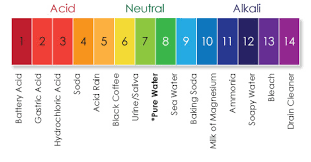
Decarbonation is a critical process in water treatment, and understanding the impact of alkalinity is essential for its successful implementation.
Alkalinity refers to the water's ability to neutralize acids, and it plays a significant role in determining the effectiveness of the decarbonation process. Let's delve deeper into how alkalinity impacts decarbonation:
- Buffering Capacity: Alkalinity acts as a buffering agent, providing resistance to changes in pH. During decarbonation, acidic gases, such as carbon dioxide (CO2), are removed from the water. The presence of alkalinity helps maintain the water's pH within an acceptable range, preventing rapid pH fluctuations that could hinder the efficiency of the decarbonation process.
- Acid Neutralization: Decarbonation aims to remove acidic gases, which can include carbon dioxide and other acid-forming substances, from the water. Alkalinity plays a crucial role in neutralizing these acids by reacting with them and converting them into less harmful forms. By having an adequate alkalinity level, the water can effectively counteract the acidity and maintain a desirable pH balance.
- pH Adjustment: pH adjustment plays a crucial role, particularly in water treatment and various industries. Alkalinity, a key factor, directly affects the pH of water, making pH control essential for successful decarbonation. The desired pH range for effective decarbonation depends on specific water treatment goals, and alkalinity acts as a regulator by either providing or consuming alkaline compounds. This regulation ensures that the pH remains within the optimal range, facilitating efficient decarbonation and achieving desired water treatment outcomes. Understanding the relationship between alkalinity, pH adjustment, and the decarbonation process is vital for effective water treatment and pH control in various industrial applications.
- Efficiency of Chemical Reactions: Decarbonation processes often involve the use of chemicals or reagents to facilitate the removal of carbon dioxide or other acidic gases. The presence of alkalinity can enhance the efficiency of these chemical reactions by providing the necessary alkaline compounds for the reactions to occur effectively.
- System Design Considerations: The alkalinity level of the water must be taken into account when designing decarbonation systems. The alkalinity level affects the selection of appropriate equipment, such as scrubbers or towers, and the design parameters to ensure optimal performance. Understanding the alkalinity of the water helps in designing efficient decarbonation systems tailored to the specific alkalinity characteristics of the water source.
- Carbonate: A Key Contributor to Alkalinity Carbonate is an influential substance that directly affects alkalinity levels in water. It is crucial to identify its sources and understand the common carbonate levels found in water. By doing so, we can gain valuable insights into the decarbonation process.
- Bicarbonate: Understanding its Role in Alkalinity Bicarbonate is another significant contributor to alkalinity. By exploring its significance and typical sources, we can grasp its role in water alkalinity and its implications for decarbonation. Understanding bicarbonate levels is essential for designing effective decarbonation systems.
- Borate: A Contributing Factor to Alkalinity Borate is a substance that affects alkalinity levels and should be considered during decarbonation processes. We will explain its presence in water, its influence on alkalinity, and provide examples of potential sources and levels. This knowledge will contribute to designing efficient decarbonation systems.
- Silicate: Impact on Alkalinity Silicate also plays a role in alkalinity. By discussing its occurrence in water and its influence on alkalinity levels, we can better understand its relevance to decarbonation. We will explore various sources of silicate and the varying levels typically found in water.
- Phosphate: A Substance Affecting Alkalinity Phosphate is an important factor to consider when examining alkalinity. We will explain its presence in water and its contribution to alkalinity levels. Examples of common sources and typical phosphate levels will be provided, enhancing our understanding of its role in decarbonation.
It is evident that alkalinity has a significant impact on the decarbonation process in water treatment. By understanding the alkalinity level and its role in pH control, acid neutralization, and overall system efficiency, water treatment professionals can design and optimize decarbonation processes for effective removal of acidic gases. Consulting with experienced professionals, such as those at DeLoach Industries Inc., can provide valuable insights and tailored solutions to ensure successful decarbonation and water treatment outcomes.
In conclusion, comprehending the specific substances that contribute to alkalinity is crucial for effective water treatment, especially during the decarbonation process. By understanding carbonate, bicarbonate, borate, silicate, and phosphate levels, we can design and engineer decarbonation systems tailored to water quality data. At DeLoach Industries Inc., we specialize in water treatment solutions and can provide the guidance and support you need to optimize your decarbonation process.
For more information or personalized assistance, please contact our professionals at DeLoach Industries Inc. by calling (941) 371-4995. We are committed to helping you navigate the complexities of alkalinity and decarbonation, ensuring the success of your water and wastewater treatment endeavors. Let us partner with you to achieve the highest quality of treated water and maintain water system efficiency.
Receive Your Free Odor Control E-Book





